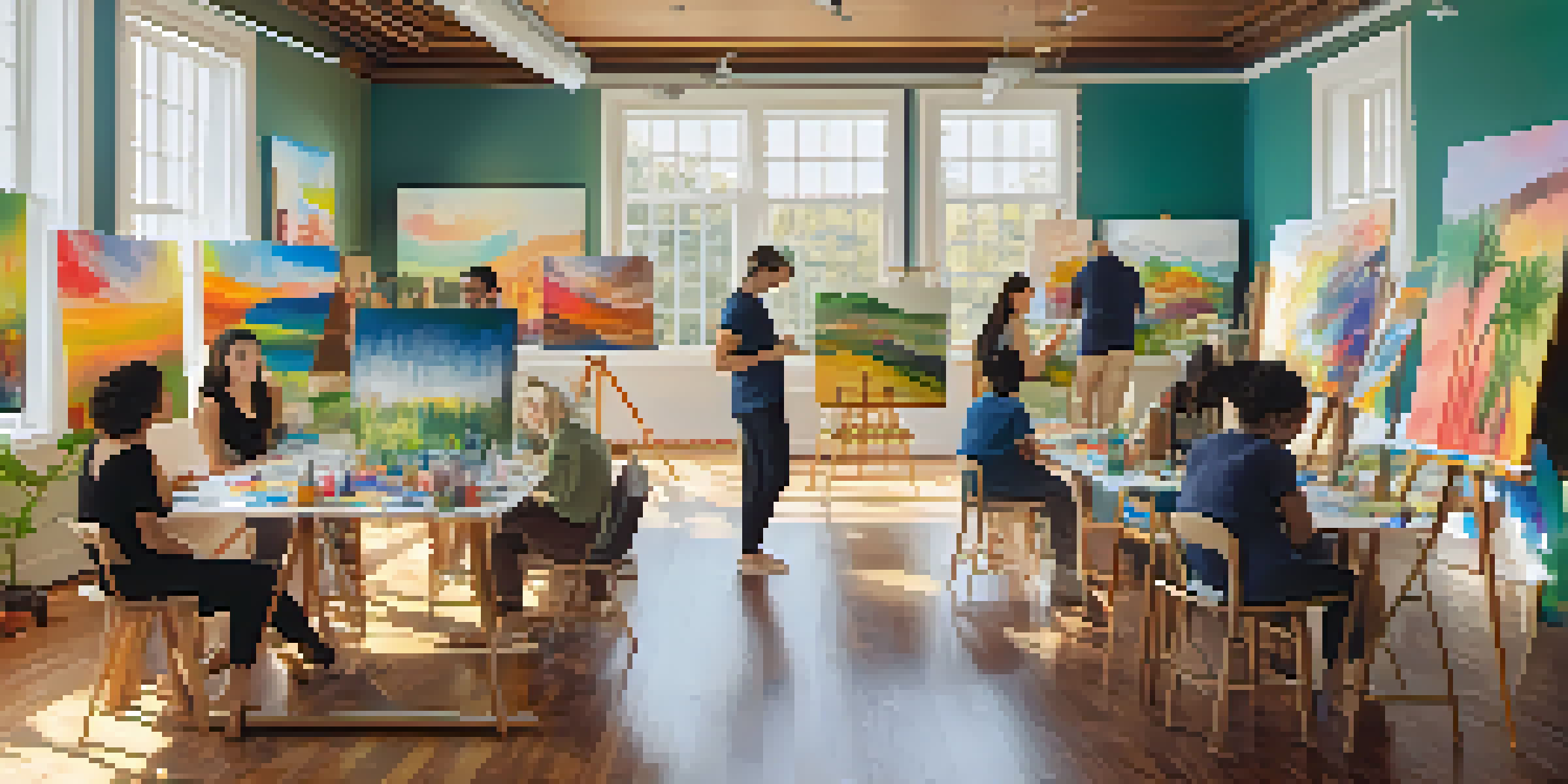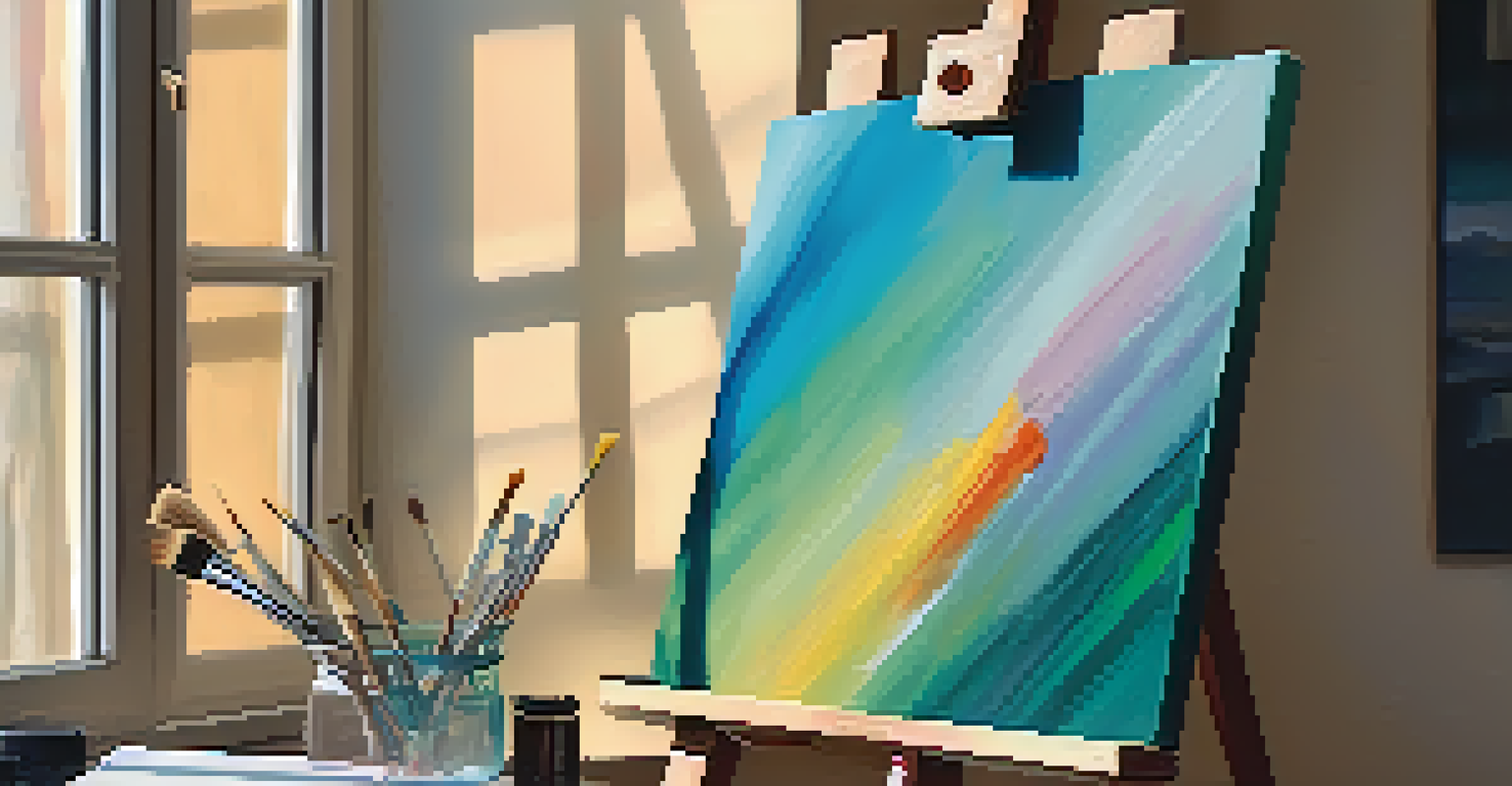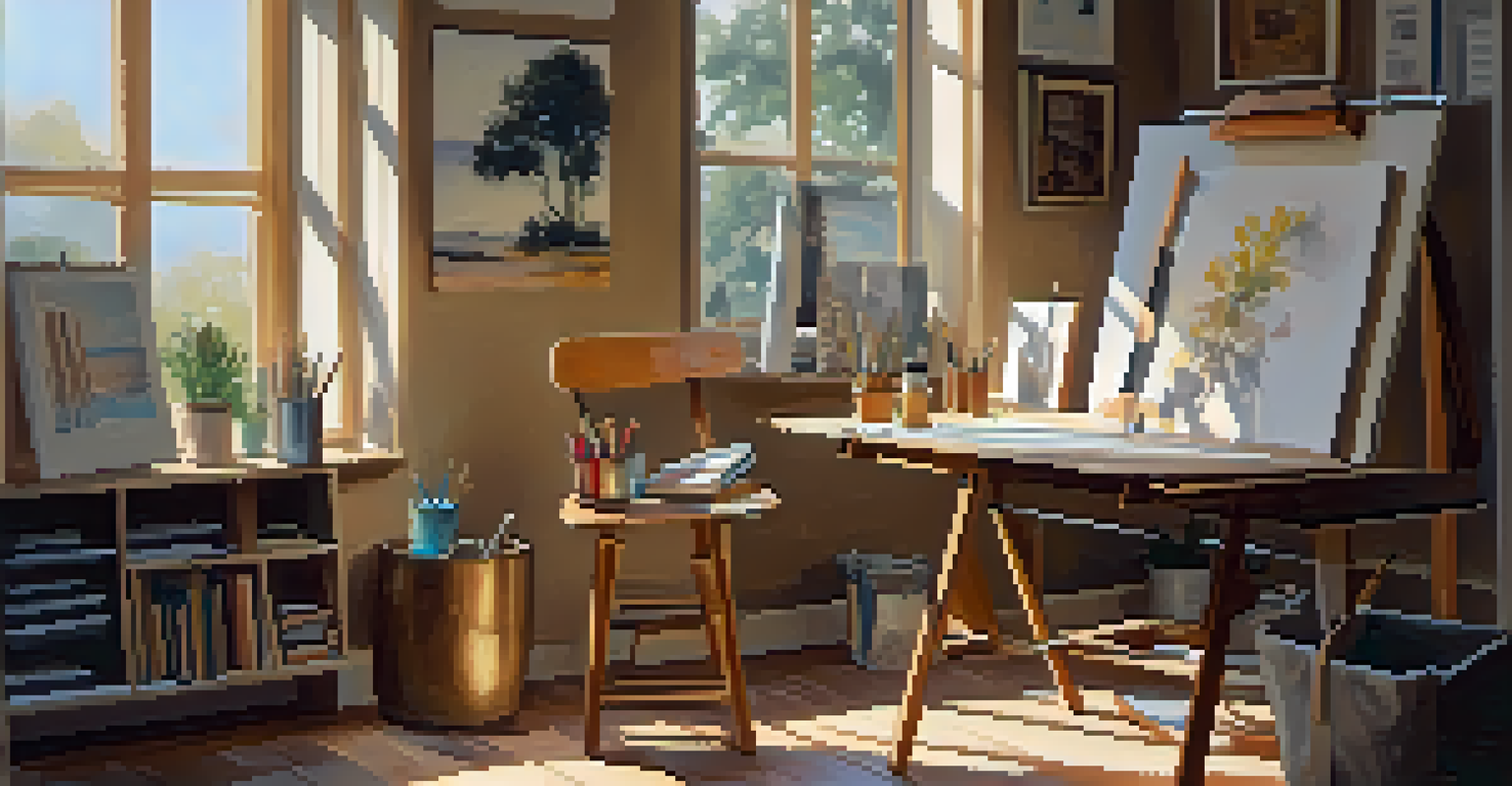How Marijuana Influences the Creative Process in Art Therapy

Understanding Art Therapy: A Creative Outlet for Healing
Art therapy combines artistic expression with psychological healing, allowing individuals to explore their emotions in a safe environment. It utilizes various artistic mediums, such as painting and sculpting, to facilitate communication when words may fail. This process encourages self-discovery and personal insight, making it a powerful tool for mental health.
Creativity takes courage.
In art therapy, the focus is on the process rather than the end product, which can be liberating for participants. They can express themselves authentically, free from judgment or expectations. This creative freedom often leads to deeper emotional exploration and healing.
Many individuals find that engaging in art therapy provides a sense of relief and a way to process complex feelings. By tapping into their creativity, they can confront personal challenges and experiences, making it an effective therapeutic approach.
The Role of Marijuana in Enhancing Creativity
Marijuana is often associated with creativity, with many artists and musicians claiming it enhances their imaginative processes. This influence may stem from the way marijuana interacts with the brain, promoting a state of relaxation and openness to new ideas. For some, this altered state can lead to unique perspectives and innovative concepts.

Research suggests that marijuana can encourage divergent thinking, a critical component of creativity where individuals generate multiple solutions to a problem. This can be particularly beneficial in an art therapy setting, where exploring various ideas and interpretations is essential for personal expression.
Art Therapy Promotes Emotional Healing
Art therapy allows individuals to express complex emotions through creative mediums, facilitating self-discovery and personal insight.
However, the effects of marijuana can vary widely between individuals. While some may find their creative juices flowing, others might experience anxiety or distraction. Understanding these nuances is crucial for integrating marijuana into art therapy practices.
Exploring the Therapeutic Benefits of Marijuana
Beyond creativity, marijuana has therapeutic properties that can aid in various mental health conditions. It may help alleviate symptoms of anxiety, depression, and PTSD, creating a more conducive environment for self-exploration. This can be particularly beneficial for individuals in art therapy who are grappling with emotional pain.
Art is the most beautiful of all lies.
The calming effects of marijuana can also reduce inhibitions, allowing participants to engage more freely in the artistic process. When participants feel less anxious, they may be more likely to take risks in their artwork, leading to surprising and meaningful results.
It's important to note that the therapeutic benefits of marijuana should be considered alongside potential risks. As with any treatment, a balanced approach that prioritizes the individual's well-being is essential.
Setting the Stage: Creating a Safe Space for Exploration
Incorporating marijuana into art therapy requires a carefully curated environment that fosters safety and support. Therapists play a crucial role in guiding participants through this process, ensuring they feel comfortable and secure. A welcoming space can enhance the overall experience and encourage artistic exploration.
Establishing clear boundaries and expectations is vital. Participants should have the freedom to choose whether or not to use marijuana, and their choices should be respected without pressure. This autonomy is essential for maintaining trust and promoting a positive therapeutic relationship.
Marijuana Enhances Creative Expression
The use of marijuana in art therapy can promote relaxation and openness, potentially leading to unique artistic perspectives and exploration.
Creating a safe space allows for open dialogue about the effects of marijuana and how it impacts individual creativity. This transparency fosters understanding and helps individuals navigate their unique experiences within the art therapy framework.
The Interplay of Marijuana and Artistic Expression
Marijuana can influence artistic expression in various ways, from altering perception to enhancing sensory experiences. Participants may find that colors appear more vibrant or that sounds become more profound, enriching their creative process. This heightened awareness can lead to more profound artistic outcomes.
As individuals explore these altered perceptions, they might discover new techniques or styles that resonate with them. This exploration can lead to a deeper connection with their artwork and a more authentic expression of their emotions. Over time, this can result in notable growth in their artistic abilities.
However, it's essential to approach this interplay mindfully. Being attuned to how marijuana affects each individual's creativity can lead to more personalized and effective art therapy sessions.
Navigating the Legal and Ethical Aspects of Marijuana Use
The legal status of marijuana varies widely, influencing its use in therapeutic settings. In regions where marijuana is legalized for medical purposes, therapists need to stay informed about regulations and best practices. This ensures that they provide safe and ethical care while respecting the law.
Ethically, therapists must prioritize the well-being of their clients. This includes being transparent about the potential benefits and risks associated with marijuana use in art therapy. Open discussions can help participants make informed decisions about their involvement.
Creating Safe Spaces for Therapy
Establishing a supportive environment is crucial for integrating marijuana into art therapy, ensuring participants feel comfortable and respected.
Navigating these legal and ethical aspects requires ongoing education and awareness. Therapists should engage in continuous learning to adapt to changing regulations and to provide the best support for their clients.
Personal Experiences: Stories from the Intersection of Art and Marijuana
Many individuals have shared transformative experiences where marijuana enhanced their art therapy journey. For instance, a participant might recount how smoking before a session allowed them to paint with greater freedom, enabling them to express emotions they had long suppressed. These personal stories highlight the potential benefits of combining marijuana with creative expression.
Another individual may describe how, with the help of marijuana, they created a powerful piece of art that reflected their journey through grief. This newfound ability to channel complex emotions into their work illustrates the profound impact that art therapy can have when paired with the right tools.

These anecdotes serve as reminders of the unique ways in which art therapy and marijuana can intersect, paving the way for deeper understanding and healing through creativity.